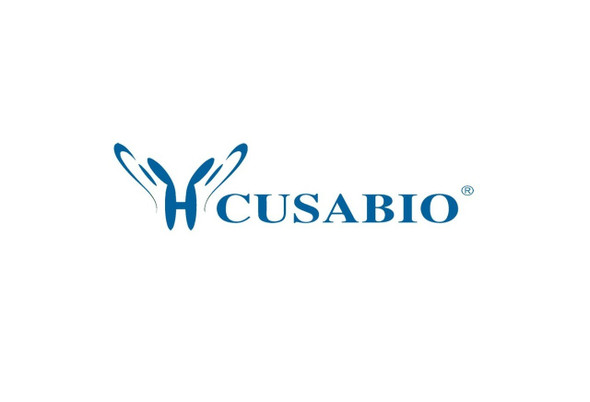Cusabio Virus & Bacteria Recombinants
Recombinant SerRatia marcescens DNA-binding protein H-NS (hns) | CSB-EP324759SYN
- SKU:
- CSB-EP324759SYN
- Availability:
- 13 - 23 Working Days
Description
Recombinant SerRatia marcescens DNA-binding protein H-NS (hns) | CSB-EP324759SYN | Cusabio
Alternative Name(s): Histone-like protein HLP-II
Gene Names: hns
Research Areas: Microbiology
Organism: Serratia marcescens
AA Sequence: SERLKILNNIRTLRAQARECTLETLEEMLEKLEVVVNERREEDSQAQAEIEERTRKLQQYREMLIADGIDPNELLQTMAANKAAGKAKRARRPAKYQYKDENGELKTWTGQGRTPAVIKKAIEEQGKSLDDFLL
Source: E.coli
Tag Info: N-terminal 6xHis-tagged
Expression Region: 2-135aa
Sequence Info: Full Length of Mature Protein
MW: 19.5 kDa
Purity: Greater than 90% as determined by SDS-PAGE.
Relevance: H-NS binds tightly to ds-DNA, increases its thermal stability and inhibits transcription. It also binds to ss-DNA and RNA but with a much lower affinity. H-NS has possible histone-like function. May be a global transcriptional regulator through its ability to bind to curved DNA sequences, which are found in regions upstream of a certain subset of promoters. It plays a role in the thermal control of pili production. It is subject to transcriptional auto-repression. It binds preferentially to the upstream region of its own gene recognizing two segments of DNA on both sides of a bend centered around -150 (By similarity).
Reference: "Characterization of the structural genes for the DNA-binding protein H-NS in Enterobacteriaceae."la Teana A., Falconi M., Scarlato V., Lammi M., Pon C.L.FEBS Lett. 244:34-38(1989).
Storage: The shelf life is related to many factors, storage state, buffer ingredients, storage temperature and the stability of the protein itself. Generally, the shelf life of liquid form is 6 months at -20?/-80?. The shelf life of lyophilized form is 12 months at -20?/-80?.
Notes: Repeated freezing and thawing is not recommended. Store working aliquots at 4? for up to one week.
Function: A DNA-binding protein implicated in transcriptional repression and chromosome organization and compaction. Binds nucleation sites in AT-rich DNA and bridges them, forming higher-order nucleoprotein complexes and condensing the chromosome. As many horizontally transferred genes are AT-rich, it plays a central role in silencing foreign genes. A subset of genes are repressed by H-NS in association with other proteins (By similarity).
Involvement in disease:
Subcellular Location: Cytoplasm, nucleoid
Protein Families: Histone-like protein H-NS family
Tissue Specificity:
Paythway:
Form: Liquid or Lyophilized powder
Buffer: If the delivery form is liquid, the default storage buffer is Tris/PBS-based buffer, 5%-50% glycerol. If the delivery form is lyophilized powder, the buffer before lyophilization is Tris/PBS-based buffer, 6% Trehalose, pH 8.0.
Reconstitution: We recommend that this vial be briefly centrifuged prior to opening to bring the contents to the bottom. Please reconstitute protein in deionized sterile water to a concentration of 0.1-1.0 mg/mL.We recommend to add 5-50% of glycerol (final concentration) and aliquot for long-term storage at -20?/-80?. Our default final concentration of glycerol is 50%. Customers could use it as reference.
Uniprot ID: P18955
HGNC Database Link: N/A
UniGene Database Link: N/A
KEGG Database Link: N/A
STRING Database Link: N/A
OMIM Database Link: N/A










